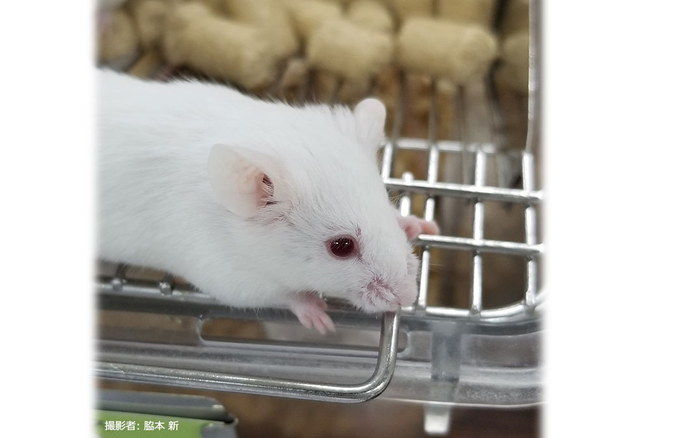Tsukuba, Japan – Non-alcoholic fatty liver disease (NAFLD) is the accumulation of fat in the liver unrelated to alcohol abuse or other liver diseases. It is often associated with obesity and diabetes and is considered a manifestation of metabolic syndrome. It progresses into non-alcoholic steatohepatitis (NASH) with the onset of inflammation, although it is currently unclear how this occurs. NASH can lead to severe complications such as liver failure, cirrhosis, and liver cancer. Now, a team led by the University of Tsukuba has found that albino mice with a point mutation in the tyrosinase gene are more susceptible to NASH than mice carrying the non-mutated gene.

Credit: University of Tsukuba
Tsukuba, Japan – Non-alcoholic fatty liver disease (NAFLD) is the accumulation of fat in the liver unrelated to alcohol abuse or other liver diseases. It is often associated with obesity and diabetes and is considered a manifestation of metabolic syndrome. It progresses into non-alcoholic steatohepatitis (NASH) with the onset of inflammation, although it is currently unclear how this occurs. NASH can lead to severe complications such as liver failure, cirrhosis, and liver cancer. Now, a team led by the University of Tsukuba has found that albino mice with a point mutation in the tyrosinase gene are more susceptible to NASH than mice carrying the non-mutated gene.
The prevalence and severity of NAFLD are known to vary between different human ethnicities, with the highest prevalence in Hispanic populations. The tyrosinase gene encodes an enzyme that is involved in melanin production, affecting skin tone. The team observed in preliminary computational analyses that different point mutations in the tyrosinase gene also vary in frequency between different ethnic groups, with the two main variants observed at high frequencies in Hispanic populations. The researchers therefore hypothesized that tyrosinase gene variants could possibly affect the susceptibility and severity of NAFLD and NASH.
The team studied a particular mouse line known as “C57BL/6”, or B6, to test this hypothesis. Albino B6 mice have a single change, known as a point mutation, in the gene tyrosinase. This affects the function of the tyrosinase enzyme so that the albino mice cannot produce melanin properly, losing pigmentation and becoming white instead of black.
Dietary cholesterol contributes to the development of liver inflammation, and so the team fed both albino and black B6 mice a high cholesterol diet for 10 weeks. They found that black B6 mice exhibited no symptoms over the entire course of the diet, while approximately 50% of the albino B6 mice showed a severe phenotype, developing liver injury after a single day that progressed to NASH after 2 weeks.
The team further showed that the albino B6 mice showed high expression of tyrosinase in the small intestine. “This could affect the susceptibility of the mice to NASH by affecting the uptake of cholesterol in the small intestine,” says senior author Assistant Professor Michito Hamada, “pointing to a potential mechanism for this increased susceptibility.”
“As the point mutation in the tyrosinase gene is the only genetic difference between B6 albino and B6 black mice,” explains Assistant Professor Hamada, “our work will facilitate the identification of genetic susceptibility factors for the development of NASH and expand the understanding of the pathophysiology of NASH.”
###
The article, “Albino mice with the point mutation at the tyrosinase locus show high cholesterol diet-induced NASH susceptibility”, was published in Scientific Repots at DOI: 10.1038/s41598-021-00501-5
This work was supported by the Ministry of Education, Culture, Sports, Science and Technology of Japan (MEXT) (26221004, 25860205, 23118504, 16K18398, 19K07499, 19H00966); Uehara Memorial Foundation; Takeda Science Foundation; the Takamatsunomiya Cancer Foundation (15–24724; M. Hamada); and the World Premier International Research Center Initiative (WPI), MEXT, Japan.
Journal
Scientific Reports
DOI
10.1038/s41598-021-00501-5
Article Title
As the point mutation in the tyrosinase gene is the only genetic difference between B6 albino and B6 black mice




